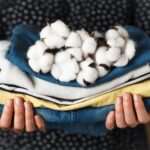First Published: 17/10/2025
With new expectations for product-level data in Europe and intensified scrutiny of textile imports in the United States, brands face a simple reality: cotton origin evidence must move as fast as fashion. Science-led verification is enabling teams to make confident decisions at pace, without compromising rigour in cotton traceability.
Rising Expectations in Europe and the United States
The global cotton industry produces nearly 120 million bales each season, and tracking where each fibre began its journey has become a daunting but urgent task. Regulators are tightening oversight, investors are demanding stronger ESG disclosure, and consumers increasingly expect transparent claims rather than vague assurances.
In the US, customs authorities have signalled that textiles are now a high-priority enforcement category, requiring brands to demonstrate credible country-of-origin evidence before goods are released. In Europe, the strategy for sustainable textiles is converging with the Digital Product Passport (DPP) initiative, which will mandate interoperable data on cotton origin, composition and environmental attributes to accompany garments across their entire life cycle. In this context, traceability has shifted from an aspiration to an operational requirement.
Structural Supply Chain Challenge
The challenge of is structural. Cotton typically travels from farms to gins, through traders, spinners, mills and finishers, before emerging as fabric or apparel. At each stage, visibility is eroded. Records are often fragmented. Merchant activity can further obscure provenance. Audits and paperwork still form the backbone of most due diligence programmes, yet both are prone to inconsistency, gaps or even manipulation. International guidance from the OECD (The Organisation for Economic Co-operation and Development) and UNECE (The United Nations Economic Commission for Europe) urges companies to move from policy statements to demonstrable practice, but this requires tools that are both scientifically robust and commercially scalable.
The Science That Turns Claims into Evidence
This is where science bridges the gap between intent and evidence, with the use of forensic science to authenticate origin. Stable Isotope Ratio Analysis (SIRA) measures the subtle isotopic fingerprint that cotton inherits from rainfall, soil and latitude. This signature can be compared against reference libraries to determine whether a fibre is consistent with a claimed origin, and crucially it persists through spinning and weaving.
This means testing is possible on yarns or greige fabrics, not just raw lint.
While isotope analytics are long‑established in food authenticity, adoption in textiles has expanded only recently as commercial testing matured. The method harnesses the atomic signature that plant‑based materials inherit from their growing environment; ISO/IEC 17025‑accredited labs extract and measure that signature and compare it to a curated national dataset.
Where a profile aligns with the reference set, the sample is reported as likely originating from that geography. Because the variance measured is intrinsic to the fibre, with no upstream marker to add or fake SIRA, powerfully complements paper trails, audits and digital records within due‑diligence frameworks.
From Data to Decisions
The value of cotton traceability lies not only in its accuracy but in its timeliness. Evidence must arrive quickly enough to influence sourcing and production decisions, which means integrating sampling into normal checkpoints such as the greige stage and ensuring results within commercially viable timelines. Reports must be audit-ready and defensible, capable of satisfying customs authorities, supporting customer disclosures, and fitting seamlessly into emerging frameworks such as the Digital Product Passport.
Accelerating Regulatory Momentum
Regulatory momentum is accelerating. In the United States, textile imports face higher scrutiny, with authorities expecting documentation that can stand up to challenge. In Europe, the forthcoming DPP, together with the Green Claims Directive and the Corporate Sustainability Due Diligence Directive, will significantly raise the bar for what constitutes a credible claim. In the UK, transparency obligations are evolving, and globally, investors are converging on more rigorous ESG disclosure standards. The direction is uniform: data must be verifiable and claims must be substantiated.
Shifting from Cost to Value
While many companies still view cotton traceability through the narrow lens of compliance cost, the commercial calculus is shifting. Stronger traceability reduces the risk of shipment delays and rejections at borders, and it also improves operational resilience by giving brands the confidence to diversify sourcing without losing sight of provenance. It strengthens consumer trust, at a time when studies show two-thirds of shoppers report factoring transparency into purchasing decisions. It also supports investor confidence by providing hard evidence behind ESG reporting. Beyond compliance, innovation is scaling: isotope reference libraries continue to expand to new geographies.
At the demand side, transparency now influences behaviour: one 2024 report found 66% of consumers consider transparency in purchase decisions. Meanwhile, supply chain volatility remains the norm, with nine in ten leaders reporting disruptions in 2024 making clear, verifiable material flows a strategic asset. Even on the technology frontier, year round deployments of cotton traceability and forensic testing are moving from trials to mainstream operations.
Practical Applications in the Industry
The practical applications of cotton traceability are already visible. Some brands are incorporating isotope testing into supplier scorecards to validate claims before approving shipments.
The future of traceability will extend beyond cotton origin. Accurate origin data will be essential for eco-design and for the repair, reuse and recycling ambitions tied to the Digital Product Passport. As sustainability claims become more tightly regulated, proof rather than trust will underpin both compliance and competitiveness.
The Role of Independent Laboratories
Independent, accredited laboratories will play a central role in this transition. Programmes such as Eurofins Sustainability Services’ Origin ID™ demonstrate how scientific verification can be embedded into routine business without disrupting production schedules. The point is not to replace audits, certifications, and transaction evidence, but to complement them, creating a layered defence against uncertainty.
The convergence of regulatory demands, consumer expectations and market risks has made traceability the new baseline of fashion integrity. Forensic science transforms cotton from a declared commodity into a tested material with a verifiable origin. Combined with digital systems, it offers the sector a pragmatic route to faster decisions, lower risk, and more credible storytelling. The fashion industry’s future credibility will not rest on statements of intent, but on evidence.






